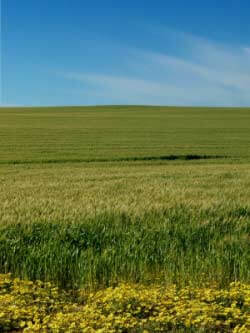Trenching is a technique which is often used in agriculture and sports fields to basically prevent the ground from becoming water logged.
Agricultural Trenching

Trenching has been widely used in agriculture for centuries to prevent the soil from becoming saturated. This is the best way to get the maximum yield of crops from ground which is prone to becoming waterlogged, the deep, narrow trenches are positioned to collect excess water and transport it away from crops allowing the soil to produce the maximum possible and the crops to flourish with just the right amount of moisture.
This agricultural technique provides the opposite service to farmers and agriculturalists in sub-Saharan parts of the world where more water is needed to help crops to grow and to help with the conservation of the soil. This technique involves digging the deep, narrow trenches along contours en-capturing water as it flows downhill and keeping it around the agricultural land. Using two contour trenches creates a fertile, watered area between the trenches in areas where rainfall is sparse and can make a big difference to the crops which can be grown there.
Agricultural Contour Trenching
When using this technique not only does it prevent the rain water from running down the hill and being wasted but it also helps to retain vital soil particles which would otherwise be lost due to wind and water erosion.
Sports field Trenching
This technique is just the same although the reasoning behind the trenching is slightly different. Trenching is widely used in sports fields, golf courses and other sports facilities to prevent the ground becoming waterlogged, keeping the facility perfect for all sporting activities. The deep, narrow trenches are strategically placed to keep the water away from areas which are prone to becoming waterlogged ensuring that the sports facility can be used, as near as possible – all year round.
Find out more about AFT trenchers
